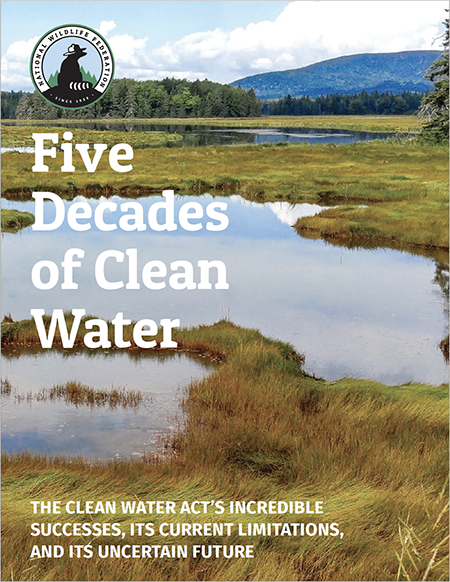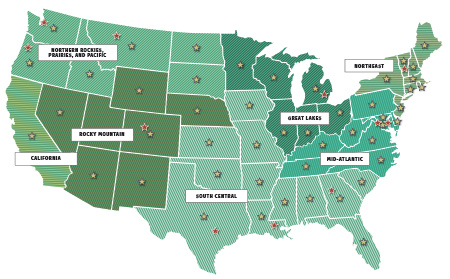Five Decades of Clean Water
- National Wildlife Federation
- Oct 17, 2022

The Clean Water Act’s Incredible Successes, Its Limitations, and Its Uncertain Future
Few laws have been as transformative to the nation’s quality of life as the Clean Water Act. Fifty years ago, many of America’s urban waterways were choked with raw sewage and industrial waste, too polluted to support fish or other aquatic life. There are roughly 120 million more Americans today than there were in 1972, but the number of places that meet water quality standards have roughly doubled. Furthermore, very few water bodies are as polluted as our nation’s urban waterways once were.
The report, Five Decades of Clean Water: The Clean Water Act’s Incredible Successes, Its Current Limitations, and Its Uncertain Future , summarizes some of the law’s successes, such as:
-
Improving Wastewater Treatment: The Clean Water Act funded approximately 35,000 grants totaling $650 billion. On average, each grant significantly decreased pollution for 25 miles downstream, with benefits lasting for decades.
-
Preventing Industrial Pollution: The National Pollutant Discharge Elimination System (NPDES) program prevents 700 billion pounds of pollutants from entering our waters annually. Approximately 200,000 “point source” pollutants – such as sewage treatment facilities, paper mills, petroleum refineries, indoor hog farms and certain types of construction sites – are currently regulated under this section of the law.
-
Protecting Wetlands: Before passage of the Clean Water Act wetlands were being lost at an astonishing rate. An area of wetlands roughly the size of Maryland – 7.6 million acres of wetlands – were destroyed in the lower 48 states in the two decades before the law took effect. The Clean Water Act has slowed wetlands loss dramatically. An analysis of the National Land Cover Database found that the total area of wetlands remained steady in the lower 48 states between 2001 and 2016, with losses matched by gains in other places.
Fifty years later, there is a long way to go before the overarching goal of the Clean Water Act – fishable, swimmable, drinkable waters nationwide – is achieved. The Clean Water Act has been most successful at addressing direct sources of pollution through its permitting process, but it does not directly regulate agricultural or urban runoff pollution. Today, agricultural runoff pollution is the most common reason that water bodies are considered “impaired” under the law.
Furthermore, the Clean Water Act’s benefits are not equally distributed – even thoughmuch of the original impetus for the passage of the Clean Water Act came from inner-city communities disproportionately affected by the sewage and industrial waste that once choked urban rivers. The report details how communities of color and low-income communities are still more likely to come into with polluted water from flooding, sewer overflows, and basement backups – events that will become more common as the climate continues to warm – and do not always equitably benefit from the law’s funding.
Despite its many successes, the scope of the law itself is under attack. Currently, the Supreme Court is considering a case called Sackett v. EPA that has the potential to remove Clean Water Act protections for roughly half the nation’s streams and wetlands. If the justices agree with the plaintiffs in the case, the result would put people and wildlife across the country at risk:
-
More than half of all stream miles nationwide could lose protections.
-
Roughly a third of all Americans get drinking water from the streams at risk.
-
Impacts in the arid West could be particularly severe. For example, nearly all of the Arizona’s streams are at risk of losing protections, which would invalidate 98% of existing discharge permits.
-
Roughly half of the nation’s wetlands could lose Clean Water Act protections, increasing the risk of flooding nationwide.










